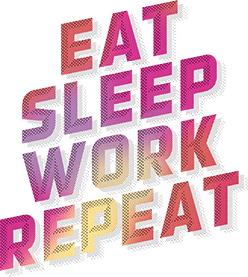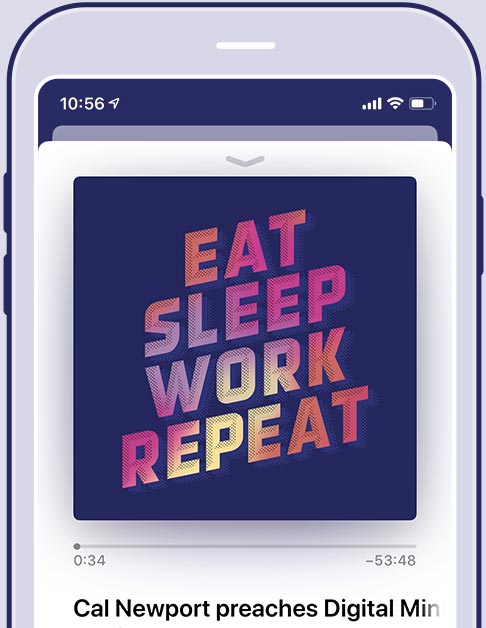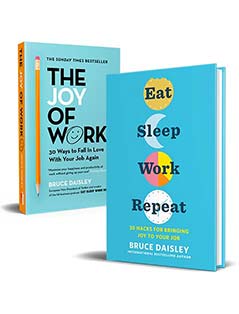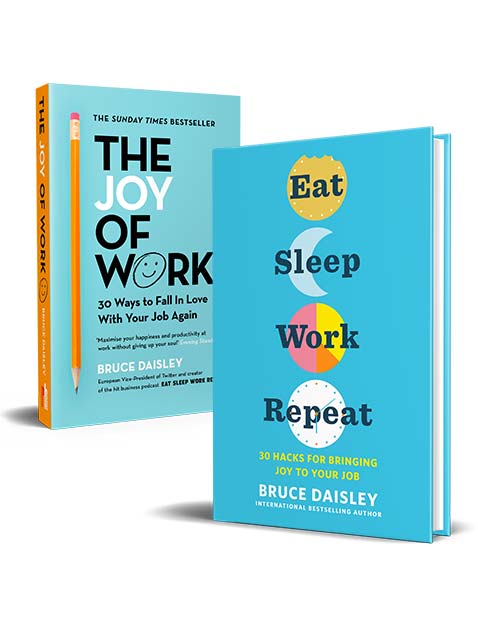Lockdown calling: an insight into what home workers are saying
TL;DR key findings of Leesman home working report:
- people unequivocally feel way more productive at home
- biggest differentiator between firms is the amount that workers feel connected
- every age group is happier, some are much happier
- the least happy are those who use to have private offices
- the average firm is going to need considerably less space in the future
- firms need to articulate why they want workers back – and what they will do – on the days they will be back in offices
I was fortunate to attend a briefing by the Leesman Index last week. Leesman run one of the biggest workplace surveys in the world measuring employee engagement – and whatever causes it. Their objective is to arm organisations with data and insights that help them create outstanding workplaces. You can find more about them at their website.
With their permission I’m sharing some of the findings here. The Leesman Home Working report looked at data from 125,000 respondents across 83 different countries (representing 870 different companies). The data was gathered between the end of March and the end of August 2020.
They aggregate data into two measures the Leesman H-LMi (the satisfaction with working from home). And during that time period the overall score of satisfaction for workers working from home was 74.2 (this is out of 100). In normal times if Leesman assess a firm, a score of over 70 is regarded as ‘outstanding’.
Then then asked workers, does your home environment enable you to work productively? 82.2% said yes, compared to 62.85 for the office (a throw back to the open plan days, no doubt).
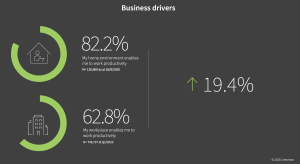
And it’s worth putting this in context the Leesman+ firms were the best of the bunch performers in the Leesman Index. The average for satisfaction now is better than the top segment in the old model. Unquestionably we feel we can do our work.

Back to the H-Lmi scores, as ever, happiness is not evenly distributed. The top performing organisation scored an H-LMi 82.5, the lowest performing scored 52.0. They wanted to understand the differences.

The small gaps are the things that most companies are about the same on. The large gaps are the differentiators. Some firms are making people feel connected, making them feel like they are collaborating, that they can still chat informally to the bosses – and the worst performers are failing at these things.
Is there a generation gap on this? Yes. But it’s not quite what you might think.
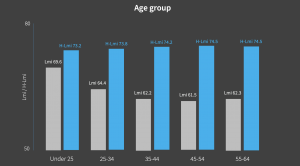
The first bar is how happy age groups were in the office before. Younger workers were ok with the office, relatively, but they are more happy with working at home. Older workers hated the office and they are yampy with delight about the option of having the run of their lavish properties now. But the headline is every group is happier, some are much happier.
How happy you are with homeworking largely depends on how many different tasks you are charged with performing in your job.

If you’re wondering what are the different tasks that the bottom group numbered here are some examples:
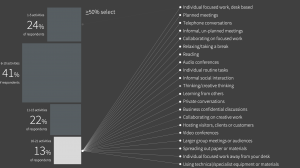
How happy people are does obviously depend on whether they are WFB (working from bed) or hunkered down in a lovely home office.
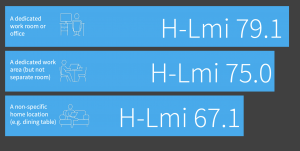
What is the office better at? Unsurprisingly it is better for meeting customers, learning from others, informal chat, collaborating on creative work.
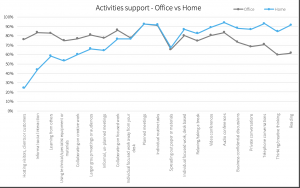
This bit was helpful. How happy you are at home was largely reflected in what your workplace surroundings were like.

Those (bosses) who had a private office at work are pretty unhappy with the state of affairs now. Those who sat on a shared table are delighted with it.
Finally, hidden in averages is a blend of individual experiences. In this chart some people had a office happiness score of 8 and a homeworking H-Lmi of 100. And vice versa.
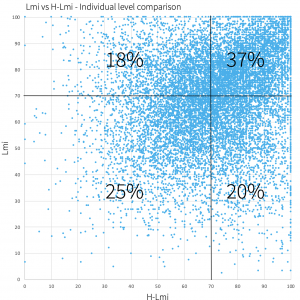
Leesman conclude there are large numbers of individuals who are loving the new way of working and will need a compelling reason to return to the office. (Remembering that control is an important part of our sense of agency, ‘because I told you to’ is never a great way to motivate adults).
If there’s no compelling reason to reason 5 days a week then every firm needs considerably less office space. As Leesman say firms need to articulate the benefit to the organisation of workers being together in the office. The more intentional and explicit they can be the better, additionally workers will be looking to see these benefits first hand.
